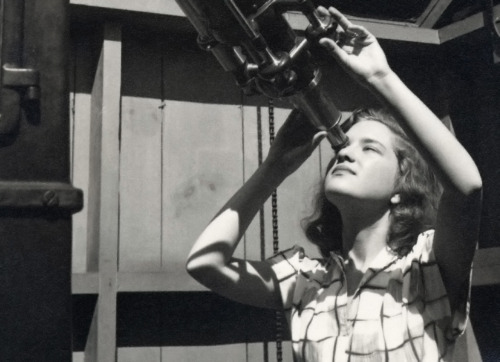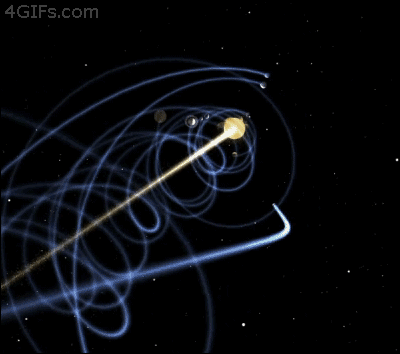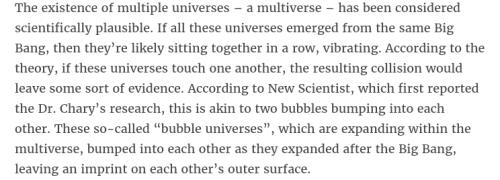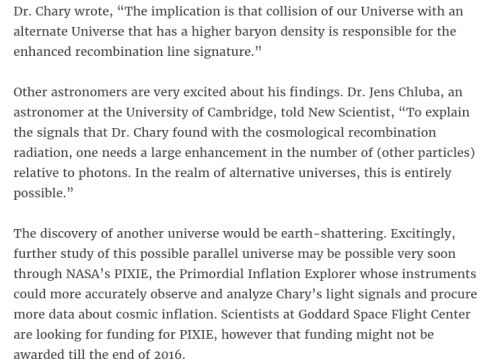A Remarkable New Study On How Whales Behaved When Attacked By Humans In The 19th Century Has Implications

A remarkable new study on how whales behaved when attacked by humans in the 19th century has implications for the way they react to changes wreaked by humans in the 21st century. The paper, published by the Royal Society on Wednesday [17 March 2021], is authored by Hal Whitehead and Luke Rendell, pre-eminent scientists working with cetaceans, and Tim D Smith, a data scientist, and their research addresses an age-old question: if whales are so smart, why did they hang around to be killed? The answer? They didn’t. Using newly digitised logbooks detailing the hunting of sperm whales in the north Pacific, the authors discovered that within just a few years, the strike rate of the whalers’ harpoons fell by 58%. […] Before humans, orca were their only predators […]. It was a frighteningly rapid killing, and it accompanied other threats to the ironically named Pacific. From whaling and sealing stations to missionary bases, western culture was imported to an ocean that had remained largely untouched […].
——-
Headline and text published by: Philip Hoare. “Sperm whales in the 19th century shared ship attack information.” The Guardian. 17 March 2021.


Catching a sperm whale during the 19th century was much harder than even Moby Dick showed it to be. That’s because sperm whales weren’t just capable of learning the best ways to evade the whalers’ ships, they could quickly share this information with other whales, too, according to a study of whale-hunting records. […]
“At first, the whales reacted to the new threat of human hunters in exactly the same way as they would to the killer whale, which was their only predator at this time,” study lead author Hal Whitehead, a professor of biology at Dalhousie University in Nova Scotia, told Live Science. “[The sperm whales] all gathered together on the surface, put the baby in the middle, and tried to defend by biting or slapping their tails down. But when it comes to fending off Captain Ahab that’s the very worst thing they could do, they made themselves a very large target.”
The whales seem to have learned from their mistakes, and the ones that survived quickly adapted — instead of resorting to old tactics, the whalers wrote in their logbooks, the sperm whales instead chose new ones, swimming fast upwind away from the whalers’ wind-powered vessels. […]
The whales communicated with and learned from each other rapidly, and the lessons were soon integrated into their wider culture across the region, according to the researchers’ interpretation of the data.
“Each whale group that you meet at sea typically comprises two or three family units, and the units quite often split off and form other groups,” Whitehead said. “So, what we think happened is that one or two of the units that make up the group could have had encounters with humans before, and the ones who didn’t copied closely from their pals who had.“
Sperm whales are excellent intel sharers: Their highly observant, communicative nature, and the fact that each family unit only stays in larger groups for a few days at a time, means they can transmit information fast.
As studies show, that information could be news on new threats, new ways to hunt or new songs to sing.
——-
One example of whales’ extraordinary information sharing abilities involves lobtail feeding, in which a humpback whale slaps its tail hard against the water’s surface, submerges to blow disorienting bubbles around its prey, and then scoops the prey up in its mouth. Researchers first observed this tactic being used by a single whale in Cape Cod, Massachusetts, in 1980, before it spread throughout the regional population in just 10 years.
Whale culture also extends far deeper than innovative ways to feed. “Sperm whales are divided into acoustic cultural climates,” Whitehead said. “They split themselves into large clans, each with distinctive patterns of sonar clicks, like a dialect, and they only form groups with members of the same clan.”
Different whale clans each have different ways of singing, moving, hunting and looking after their calves. These differences are profound enough to even give some clans a survival advantage during El Nino events, according to Whitehead. […]
In the 20th century, whales, especially the 13 species belonging to the category of ‘great whales’ — such as blue whales, sperm whales and humpback whales — found themselves pursued by steamships and grenade harpoons that they could not escape. These whales’ numbers plummeted and they soon faced extinction. […] [T]hey still face the growing destabilization of their habitats brought about by industrial fishing, noise pollution and climate change.
——-
Headline, image, caption, and text published by: Ben Turner. “Sperm whales outwitted 19th-century whalers by sharing evasive tactics.” Live Science. 19 March 2021.
More Posts from Outofambit and Others

Vera Rubin (b. 1928)
When Vera Cooper Rubin told her high school physics teacher that she’d been accepted to Vassar, he said, “That’s great. As long as you stay away from science, it should be okay.”
Rubin graduated Phi Beta Kappa in 1948, the only astronomy major in her class at Vassar, and went on to receive her master’s from Cornell in 1950 (after being turned away by Princeton because they did not allow women in their astronomy program) and her Ph.D. from Georgetown in 1954. Now a senior researcher at the Carnegie Institute’s Department of Terrestrial Magnetism, Rubin is credited with proving the existence of “dark matter,” or nonluminous mass, and forever altering our notions of the universe. She did so by gathering irrefutable evidence to persuade the astronomical community that galaxies spin at a faster speed than Newton’s Universal Law of Gravitation allows. As a result of this finding, astronomers conceded that the universe must be filled with more material than they can see.
Rubin made a name for herself not only as an astronomer but also as a woman pioneer; she fought through severe criticisms of her work to eventually be elected to the National Academy of Sciences (at the time, only three women astronomers were members) and to win the highest American award in science, the National Medal of Science. Her master’s thesis, presented to a 1950 meeting of the American Astronomical Society, met with severe criticism, and her doctoral thesis was essentially ignored, though her conclusions were later validated. “Fame is fleeting,” Rubin said when she was elected to the National Academy of Sciences. “My numbers mean more to me than my name. If astronomers are still using my data years from now, that’s my greatest compliment.”
Sources:
1. http://innovators.vassar.edu/innovator.html?id=68; http://science.vassar.edu/women/
2. http://dspace.mit.edu/handle/1721.1/45424
At Ebooks Direct: Our Pride Month Bundle is 50% off!

Caution! These works contain: homosexuals, bisexuals, lesbians, pansexuals, asexuals, polyamorous folks, genderfluid humans and nonhumans, and two (or maybe three) varieties of queer magic-users, as well as gay science-users, wizards, and Dragons.
And they’ve all been there since 1979.
Welcome to one universe where whom you love and how your genders intersect is between you, your lover(s), and the Goddess. And another where wizards come in so many species and sexualities that getting sniffy about something as wildly variable as local sex and gender may well be seen as kind of provincial… when you’re just one more of a million kinds of humanity, and the serious question is: “Never mind the tentacles—do you think we can date?”
The Pride Month Bundle contains:
The Door Into Fire*
The Door Into Shadow*
The Door Into Sunset*
Tales of the Five #1: The Levin-Gad
Tales of the Five #2: The Landlady
Sirronde’s World #1: The Span
Sirronde’s World #3: Parting Gifts (SW #2 not yet written)
Tales of the Middle Kingdoms #1: Lior and the Sea
Additionally, it contains the Tales of the Middle Kingdoms novella, Overdue—available only at Ebooks Direct as a standalone purchase, in this collection, and in the whole-store “I Want Everything You’ve Got” collection.
And finally, from the Young Wizards universe, the Pride Month Bundle contains the matter-of-fact exit from the (contextual) closet of two of the best-loved characters in the series—Advisory wizards Tom Swale and Carl Romeo—on their first canonically-“out” (ad)venture as a couple:
Owl Be Home For Christmas
Click here to get the 2024 Pride Package!
(And if you've got one already, or aren't interested in the offer, would you consider reblogging for the attention of others? Please & thank you!)
UK friends: due to Brexit, we regret that we are no longer able to sell ebooks into Britain. Our apologies that this offer is therefore not valid in the UK.
*Gaylaxic Spectrum Awards Hall of Fame winner

guys
guys
less than three months til the games wizard play release

Just a quick reminder that the "All The Wizardry" bundle is still available at Ebooks Direct! (Curiosity rover not included...) :)
Contains nineteen DRM-free ebooks:
The nine New Millennium Editions of the main-sequence Young Wizards novels
The Feline Wizardry trilogy
The two collections of interstitial fiction: Interim Errantry and Interim Errantry 2: On Ordeal
The only two Young Wizards short stories (as the title item and "Theobroma" in Uptown Local and Other Interventions
The non main-sequence novel Young Wizards: Lifeboats and the standalone novella Owl Be Home For Christmas (These last two works are included as independent ebook volumes even though they also appear in the Interim Errantry collections.)
The "CD extras" work The "How Lovely Are Thy Branches" Advent Calendar, featuring outtake dialogue from How Lovely Are Thy Branches (which appears in Interim Errantry)
The Young Wizards OTP Challenge, Days 1-17: short fiction in the OTP format
...And as always, should you misplace any of these, or need to change platforms, we'll replace them for you free! Details here.
So stop in and grab yourself an armful of wizardry!
Get the "All The Wizardry" Bundle
(For our UK friends, the normal sad caveat: we can't sell directly to you from the Ebooks Direct store any more due to Brexit. Our apologies.) :(
The fun thing about A Wizard Abroad is that Ronan is all dark and brooding and going through the classic protagonist stuff of finding out you’re a Chosen One with special powers and trying to resist his destiny before finally embracing it and smiting the big bad, except he’s not the protagonist, Nita is, and she’s watching all this as a spectator and at one point throws a mug of beer in his face for being an ass.
theres a giant burning orb in the sky and it can burn your flesh, it can give you diseases, it can kill you, looking directly at it causes physical pain, and we all think this is okay. we like this orb. we like to go outside and lie around on our backs when this orb is in the sky. children draw cute pictures of this levitating death orb with a smiley face on it. what is wrong with us
-
 feuilletoniste reblogged this · 1 month ago
feuilletoniste reblogged this · 1 month ago -
 bobv48-blog reblogged this · 2 months ago
bobv48-blog reblogged this · 2 months ago -
 bobv48-blog liked this · 2 months ago
bobv48-blog liked this · 2 months ago -
 fistfuloflightning liked this · 4 months ago
fistfuloflightning liked this · 4 months ago -
 j0k3rzinhu liked this · 4 months ago
j0k3rzinhu liked this · 4 months ago -
 a-moo reblogged this · 8 months ago
a-moo reblogged this · 8 months ago -
 a-moo liked this · 8 months ago
a-moo liked this · 8 months ago -
 specializationisforinsects reblogged this · 1 year ago
specializationisforinsects reblogged this · 1 year ago -
 azhyre reblogged this · 1 year ago
azhyre reblogged this · 1 year ago -
 azhyre liked this · 1 year ago
azhyre liked this · 1 year ago -
 meisterj reblogged this · 1 year ago
meisterj reblogged this · 1 year ago -
 irohthesecond liked this · 1 year ago
irohthesecond liked this · 1 year ago -
 the-fisher-queen reblogged this · 1 year ago
the-fisher-queen reblogged this · 1 year ago -
 buttons-beads-lace reblogged this · 1 year ago
buttons-beads-lace reblogged this · 1 year ago -
 2prince2sparkle liked this · 1 year ago
2prince2sparkle liked this · 1 year ago -
 ritterssport liked this · 1 year ago
ritterssport liked this · 1 year ago -
 cronebutchblues liked this · 1 year ago
cronebutchblues liked this · 1 year ago -
 specializationisforinsects liked this · 1 year ago
specializationisforinsects liked this · 1 year ago -
 weasel-the-scout reblogged this · 1 year ago
weasel-the-scout reblogged this · 1 year ago -
 riippleeffect reblogged this · 1 year ago
riippleeffect reblogged this · 1 year ago -
 riippleeffect liked this · 1 year ago
riippleeffect liked this · 1 year ago -
 polkadotsunshine liked this · 1 year ago
polkadotsunshine liked this · 1 year ago -
 doorsclosingslowly reblogged this · 1 year ago
doorsclosingslowly reblogged this · 1 year ago -
 endquestionmark liked this · 1 year ago
endquestionmark liked this · 1 year ago -
 saxifraga-x-urbium reblogged this · 1 year ago
saxifraga-x-urbium reblogged this · 1 year ago -
 andthebagsintheriver liked this · 1 year ago
andthebagsintheriver liked this · 1 year ago -
 mirrix reblogged this · 1 year ago
mirrix reblogged this · 1 year ago -
 des8pudels8kern reblogged this · 1 year ago
des8pudels8kern reblogged this · 1 year ago -
 outdatedbanana reblogged this · 1 year ago
outdatedbanana reblogged this · 1 year ago -
 allthymebestrecipes liked this · 2 years ago
allthymebestrecipes liked this · 2 years ago -
 thesaddestturnip liked this · 2 years ago
thesaddestturnip liked this · 2 years ago -
 boomkatz liked this · 2 years ago
boomkatz liked this · 2 years ago -
 the-radio-host reblogged this · 2 years ago
the-radio-host reblogged this · 2 years ago -
 junglepath liked this · 2 years ago
junglepath liked this · 2 years ago -
 the-nuclear-chaos reblogged this · 2 years ago
the-nuclear-chaos reblogged this · 2 years ago -
 itsbiscuittime reblogged this · 2 years ago
itsbiscuittime reblogged this · 2 years ago -
 greebledgoblin reblogged this · 2 years ago
greebledgoblin reblogged this · 2 years ago -
 greebledgoblin liked this · 2 years ago
greebledgoblin liked this · 2 years ago -
 gworlto liked this · 2 years ago
gworlto liked this · 2 years ago -
 fisshgutss liked this · 2 years ago
fisshgutss liked this · 2 years ago -
 pissedandbored reblogged this · 2 years ago
pissedandbored reblogged this · 2 years ago -
 tauforged liked this · 2 years ago
tauforged liked this · 2 years ago -
 pepsisoap liked this · 2 years ago
pepsisoap liked this · 2 years ago -
 glornt reblogged this · 2 years ago
glornt reblogged this · 2 years ago -
 glornt liked this · 2 years ago
glornt liked this · 2 years ago -
 monkeybean29 reblogged this · 2 years ago
monkeybean29 reblogged this · 2 years ago
A personal temporospatial claudication for Young Wizards fandom-related posts and general space nonsense.
288 posts







